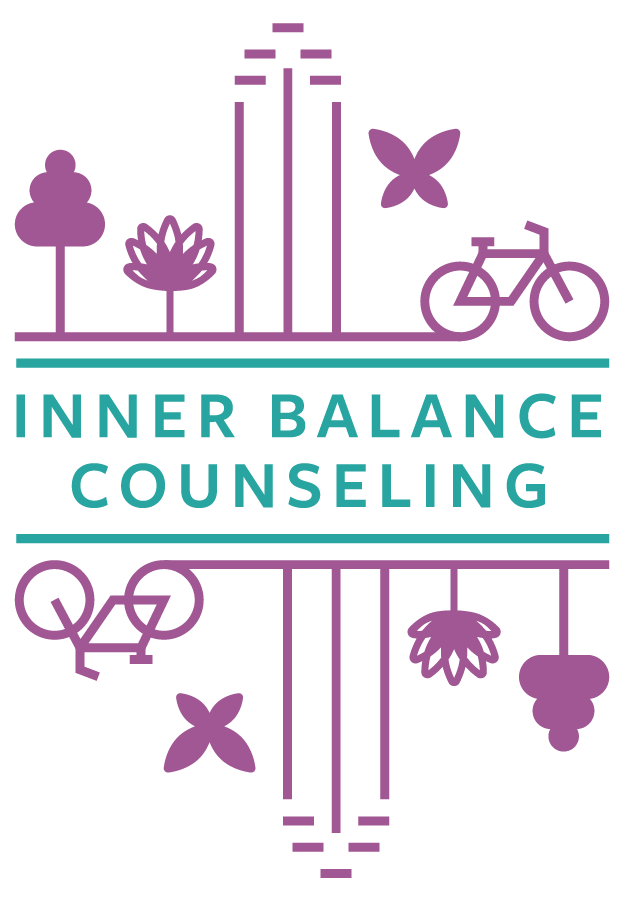Spotlight On: Polyvagal Theory
Polyvagal Theory is a fascinating therapeutic framework that delves into the intricate connections between our nervous system, emotions, and social interactions. Developed by Dr. Stephen Porges, this theory offers profound insights into how our bodies respond to stress, connect with others, and navigate the complexities of daily life. In this edition of our “Spotlight On” blog series, Inner Balance therapist Trey Jackson talks to us about what drew him to seek training in Polyvagal Theory, and how he sees it benefitting his clients.
1. Can you tell us a little bit about what Polyvagal Therapy is and what sets it apart from other approaches to counseling?
In our western culture we live a very top down life, meaning we first orient ourselves to our thoughts and then our body, presuming bodily reactions come in consequence to thoughts. However the roots of many of our issues actually reside within the nervous system and the body as the primary source of feeling and emotion. We are still animals on a biological level and have an autonomic nervous system that’s constantly reacting and anticipating our environment with little input from our conscious mind. The subconscious mind records the past to anticipate the future, but this survival instinct and adaptive behavior isn’t as helpful in today’s environment as it was in our past.
This might implore one to seek out a bottom up approach in therapy, meaning we start with getting familiar with the body as the origin point of a client’s concerns. The mind and our thoughts can still be relevant and helpful, but connecting to where those thoughts are occurring in the body is just as important in finding relief and healing. Noticing when our nervous system is regulated versus dysregulated, and what causes these transitions helps build a map to wellness.
2. What led you to seek training in this approach?
I’d always been seeking to understand the origins of why people behave and react the way we do. I felt the roots of our reactions lay in something more intricate than just our thoughts, and there was more to the information stored in our nervous system. I slowly learned how the body processes and recalls the texture of events from our past, sometimes without our awareness depending on the intensity of an event. Learning this could be subconsciously processed in our earliest years, without our conscious memory, yet still influencing our present day life fascinated me and drew me to wanting to learn more about the autonomic nervous system.
3. What outcomes do you see with clients who you use Polyvagal therapy with?
Clients can generally get a better grasp on flooding and numbing within their nervous system in their day to day life. Flooding means the overwhelming panic or anxious feelings that can occur in their lives, and numbing is the shutting down due to the overwhelm from those feelings. Flooding can sometimes be tied to traumatic experiences that shape the nervous system’s view of the world, and numbing could be any form of addictive behaviors to help self soothe the nervous system.
This all happens in the body, so the more familiar clients become with that as their home base the more they are apt to regulate it. If a memory is stored in the body, we process it to give the client relief in the present. Once clients can better physically orient in each moment, the less likely one needs to consume external stimuli or substances to help one regulate their nervous system. Clients move from needing external input, to regulating their own nervous system autonomously with tools around mindfulness, breathing, and presence in their body.
4. Who do you think could benefit from this approach?
Anyone that’s experienced C-PTSD, PTSD, various adverse childhood experiences, anxiety, depression and chronic stress can generally be linked back to nervous system dysregulation. The goal is to process anything in the body that’s remaining from the past, or anticipated for the future, and ground clients into the present and in their bodies to feel more at home and alive in their lives. If a client desires to feel relief and presence in their lives, this approach can help facilitate that outcome.
5. What is one piece of wisdom you have learned from your Polyvagal training that you can share with us?
The body does not know the past or future, it only knows the present. If a present moment resembles something emotionally charged from the past, the nervous system responds in the now. The same goes for anticipating something in the future, the body responds as if those anticipations are happening in the present.
While that can feel daunting, we can use that same mechanism to reorient the body and fully feel whatever lingers from the past or is anticipated in the future. By allowing an emotion or feeling to fully play out, the intensity and need for something external to help us regulate lessens over time. Other tools like EMDR can be used in conjunction with Polyvagal to help smooth out this process and allow us to ultimately feel more complete and whole with ourselves in our lives.
Here is a short video that does a really good job of explaining the finer details and nuances of polyvagal theory: https://www.youtube.com/watch?v=ZdIQRxwT1I0&t=88s
